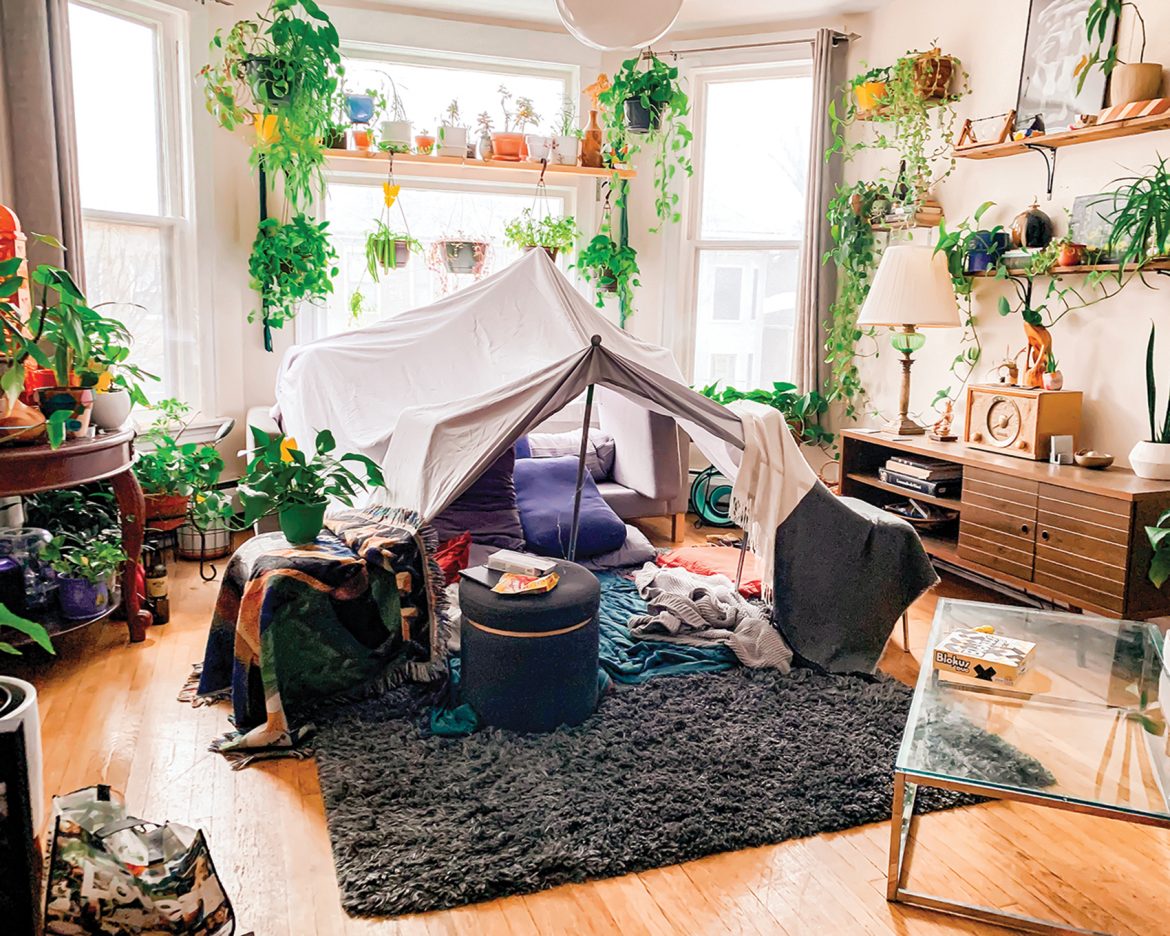Growing up, Sunday afternoons really were a time for rest and relaxation. After Sunday dinner dishes were done, the newspaper was consumed, and coupons for the upcoming grocery shopping were clipped, the adults would often “just close their eyes for a minute,” leaving the children of the house on their own. Surely, we all have memories of being bored to tears and knowing better than to ask a parent for something to do! Being bored and left to our own devices led to some pretty creative playtime.
A table or some chairs and a quilt made a great tent. Sticks and cans became percussion instruments. Friends with bicycles or skates looked like a parade winding down the street. Playing pretend opened up worlds far beyond the neighborhood, and a pickup game of kickball encouraged alliances and strategies that at the time we didn’t even know would become a cache of skills that we would use the rest of our lives.
Times have changed. Today, children are seduced by electronic media that gives them a false sense of community that doesn’t encourage curiosity about the real world. Our children are more isolated than they ever have been and addicted to repetitive behavior that, by the time they are teens, occupies more time each day than school does according to the American Academy of Child and Adolescent Psychiatry.
“On average, children ages 8-12 in the United States spend 4-6 hours a day watching or using screens, and teens spend up to 9 hours.” Screen time does not build self esteem or self confidence like creative play can. If we fail to support experimentation and exploration, we stifle creativity and the opportunity for well-rounded physical and mental growth. We never stop learning, but the greatest amount of learning occurs during the early years in a child’s life when the brain is developing most rapidly and is the most sensitive to interaction.
Every home needs spaces where a child can learn and play giving them a solid start in life. For a long time, we have understood that reading is one of the strongest indicators for long term success. Reading may be the single most important activity in a young child’s life. A place for reading is essential in a healthy home. Reading begins as a parent/child activity and can grow into a lifetime love affair with books. A quiet space with comfortable furniture for two, good lighting, and a bookshelf are all you need. Fill the shelves with books, not plastic toys. Favorite books with worn pages will remain keepsakes long after plastic toys are gone.
Spaces for pretend play are equally important. Nurture your child’s imagination through pretend and performance activities. A cabinet, storage box, or trunk becomes a magical trove of possibilities when filled with costumes, simple musical instruments, and items from a closet you have cleaned out. Upcycle old curtains, clothes, household gadgets, and even kitchen utensils. Suggest your child create a play or a “show.” Maybe it’s a puppet show, a talent extravaganza, or a circus that will unleash personality traits you did not even know were there. Invite their friends to participate, don’t be afraid to let them move the furniture around, and then be prepared to be amazed. Just don’t be surprised when the time comes for a performance if you are charged admission!
Encourage artistic activities of all sorts. Drawing and coloring seem obvious ways to support creative expression but take the next step and create an art gallery to showcase your child’s art. Consider hanging a bulletin board or magnetic board in a conspicuous place in your home and host an art opening one evening allowing your child to explain their art and what they were feeling when they created their pieces. Art is a natural way for children to express themselves. It reflects your child’s innermost thoughts and feelings. Sharing those feelings in a safe space contributes to a healthy self-esteem.
Creative children become independent, innovative adults. And the world needs more innovative problem solvers with critical thinking skills and social and emotional intelligence. As parents, we need to teach and enhance those abilities in our children as early as possible. We need to provide a home environment where they can experience creative play and we need to let them get bored from time to time.





